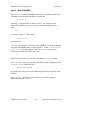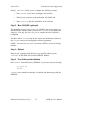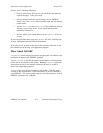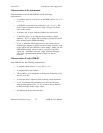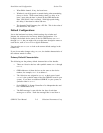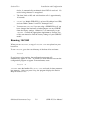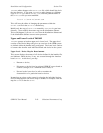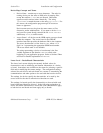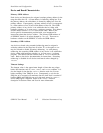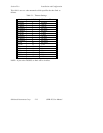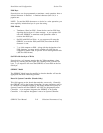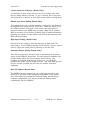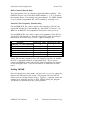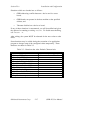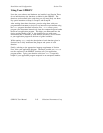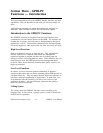Installation and Configuration Section Two
GPIB-PC User Manual 2-12 ©National Instruments Corp.
Device and Board Characteristics
Primary GPIB Address
Each device and board must be assigned a unique primary address in the
range hex 00 to hex 1E. A listen address is formed by adding hex 20 to
the primary address; the talk address is formed by adding hex 40 to the
primary address. Consequently, a primary address of hex 10 corresponds
to a listen address of hex 30 and a talk address of hex 50. The GPIB
primary address of any device is set within that device, either with
hardware switches, or, in some cases, a software program. This address
and the address listed in IBCONF must be the same. Refer to the
device-specific documentation provided with your instrument for
instructions about that device's address. The primary GPIB address of
all GPIB-PC boards is 0, unless changed by IBCONF. There are no
hardware switches on the GPIB-PC to select the GPIB address.
Secondary GPIB Address
Any device or board using extended addressing must be assigned a
secondary address in the range hex 60 to hex 7E, or the option NONE
may be selected to disable secondary addressing. As with primary
addressing, the secondary GPIB address of any device is set within that
device, either with hardware switches, or, in some cases, a software
program. This address and the address listed in IBCONF must be the
same. Refer to the device documentation for instructions. Secondary
addressing is disabled for all devices and boards unless changed by
IBCONF.
Timeout Settings
The timeout value is the approximate length of time that may elapse
before I/O functions such as IBRD, IBWRT, and IBCMD complete. It is
also the length of time that the IBWAIT function waits for an event
before returning if the TIMO bit is set. Consequently, a wait for the
SRQ line to be asserted will terminate after the time limit is reached if
both the SRQI and TIMO bits are set in the mask passed to IBWAIT,
and no SRQ signal is detected. Refer to the IBWAIT function
description in Sections Three and Four for more information.



